The Most Profitable Trees to Grow: Complete 2023 Breakdown
In this article, you'll find the ultimate list of the most profitable trees to grow for lumber, the most lucrative hardwood trees, and nut and fruit trees, including some profitable orchard crops, and the profit per acre you can gain from them.
The most profitable trees to grow include Black Walnut, Cherry, Hard Maple, Hickory, Red Oak, White Oak, Ash, Birch, Butternut, Chestnuts, Yellow Poplar, Sugar Maple, Sycamore, Almonds, Apples, Avocados, Citrus, Figs, Grapes, and Pecans. The estimated profits per acre of these trees range from $2,000 to $20,000.
Each tree species has unique benefits, such as hickory's fast growth and resistance to decay, and white oak's durability and use in wine and whiskey barrels. Let's find out what you can get from the other species.
Summary
- Black walnut, white oak, almonds, avocados, and pecans have the highest profit per acre, reaching up to $20,000.
- To maximize profits from growing trees, consider high-demand markets, value-added products, and agroforestry techniques.
- Crops such as almonds, avocados, citrus, figs, grapes, and pecans are included in this list because they can also be profitable to grow and can be an alternative to growing trees.
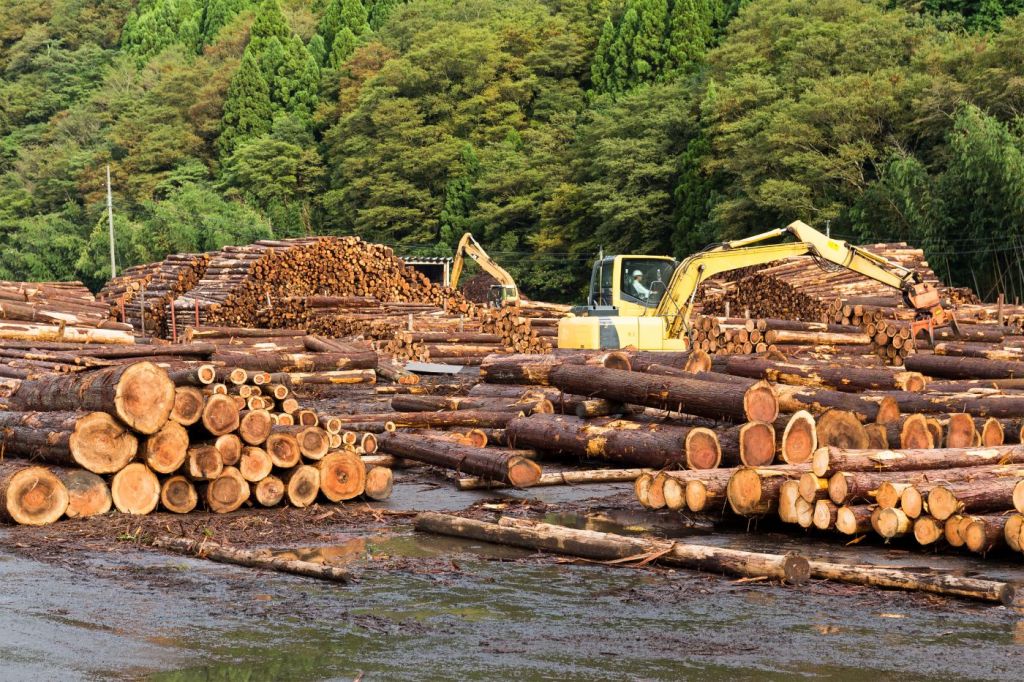
On this page:
Most Profitable Trees to Grow
Black walnut is the most profitable tree in our list. It's estimated profit per acre ranges from $12,000 to $20,000. If you're considering growing trees for profit, black walnut is an excellent choice due to its high market value. Black walnut trees provide strong, dark wood that is highly valued for woodworking and furniture making, as well as delicious nuts with a unique, rich flavor.
A well-managed acre of black walnut trees can be worth anywhere from $100,000 to $250,000 or more, depending on the age and size of the trees as well as the market demand for their wood. Black walnut trees can take 30 to 40 years to reach maturity, but they can be worth a significant amount of money once they are ready to be harvested.
Investing in tree farming can be a profitable long-term investment, but it requires careful planning, management, and patience, as it can take several years for the trees to mature and reach their full value. Here's a table of the 20 most lucrative trees and crops to grow, with their profit potential:
| Tree Species | Estimated Profit per Acre |
|---|---|
| Black Walnut | $12,000 to $20,000 |
| Cherry | $8,000 to $12,000 |
| Hard Maple | $3,000 to $5,000 |
| Hickory | $4,000 to $6,000 |
| Red Oak | $4,000 to $6,000 |
| White Oak | $10,000 to $15,000 |
| Ash | $4,000 to $6,000 |
| Birch | $2,000 to $3,000 |
| Butternut | $2,000 to $3,000 |
| Chestnut | $1,000 to $2,000 |
| Poplar | $2,000 to $3,000 |
| Sugar Maple | $3,000 to $5,000 |
| Sycamore | $2,000 to $3,000 |
| Almonds | $12,000 to $20,000 |
| Apples | $8,000 to $12,000 |
| Avocados | $10,000 to $15,000 |
| Citrus | $5,000 to $10,000 |
| Figs | $2,000 to $4,000 |
| Grapes | $6,000 to $8,000 |
| Pecans | $12,000 to $20,000 |
Note that these are estimated profits and can vary depending on various factors such as market demand, growing conditions, and management practices.
Some species may yield more profit per acre due to factors such as a higher market value, shorter growth cycle, or minimal maintenance requirements. To make the best decision for your tree farming investment, this comparison of six popular tree species provides an informative breakdown of their potential profitability.
As you plan your tree farm, remember to consider factors like the availability of land, water, and other resources to support your chosen species. If you have all these components, your tree farm can yield quality results.
Here are some products that can be made from each of the trees and crops listed:
| Most Profitable Trees | Products |
|---|---|
| Black Walnut | Furniture, gunstocks, veneer, and flooring |
| Cherry | Furniture, cabinets, decorative veneers, and musical instruments |
| Hard Maple | Flooring, furniture, cutting boards, and bowling alleys |
| Hickory | Tool handles, furniture, flooring, and smoking meats |
| Red Oak | Furniture, flooring, cabinets, and decorative veneers |
| White Oak | Furniture, flooring, wine barrels, and whiskey barrels |
| Ash | Furniture, flooring, sports equipment, and tool handles |
| Birch | Furniture, cabinets, decorative veneers, and paper products |
| Butternut | Furniture, carvings, and decorative veneers |
| Chestnut | Furniture, fencing, and posts |
| Poplar | Furniture, cabinets, and paper products |
| Sugar Maple | Flooring, furniture, cutting boards, and bowling alleys |
| Sycamore | Furniture, flooring, and decorative veneers |
| Almonds | Snacks, almond milk, and almond butter |
| Apples | Fresh fruit, juice, and cider |
| Avocados | Guacamole, salads, and sandwiches |
| Citrus | Fresh fruit, juice, and cooking ingredients |
| Figs | Fresh fruit, dried fruit, and fig bars |
| Grapes | Wine, juice, and fresh fruit |
| Pecans | Pecan pie, pecan pralines, and roasted pecans |
With this list of the products that can be made from these trees and crops, you can better determine which ones to grow and how to market them to maximize their value and potential profitability.
Most Lucrative Trees to Grow for Lumber
The value of black walnut
Profit potential: $12,000 to $20,000 per acre
- prized for its dark, rich wood and high demand for furniture and flooring
To maximize your profits from black walnut, it's essential to provide ideal growing conditions for these trees. They thrive in well-drained, fertile soil with a pH between 6.0 and 6.5. Proper care will ensure that your trees grow strong and healthy, increasing their value over time.
The value of a black walnut tree depends on its size, age, and wood quality. Mature trees can range from $1,000 to $10,000 or more, depending on these factors. The larger the diameter, the higher the value. For example, a tree with a 30" or 40" diameter can be worth significantly more than one with a 20" diameter.
Apart from black walnut, there are also other profitable trees to grow for lumber, such as oak, hard maple, and pine. Each tree species offers its own unique benefits and opportunities for success.
Cherishing cherry trees
Profit potential: $8,000 to $12,000 per acre
- known for its fine-grained, reddish-brown wood and is used for furniture, cabinets, and decorative veneers
Cherry trees are not only beautiful but can also be a profitable addition to your landscape. Growing cherry trees can provide a valuable source of income due to their wood and fruit. Let's explore the benefits of cherishing cherry trees in your homestead.
Firstly, cherry wood is highly valued for its reddish-brown color, fine texture, and smooth grain, particularly in the furniture and veneer industry. One remarkable example is the Black Cherry tree, which produces veneer-grade wood that can fetch top dollar. The key to producing high-quality veneer is to grow the trees in a dense forest or berm swamp with minimal exposure to wind and other environmental stresses.
Besides the wood, cherry trees also produce delicious fruits loved by many. To ensure a fruitful harvest, be mindful of planting conditions. Cherry trees thrive in sunny sites with good air circulation, and they require at least 6 hours of sunlight daily. Plant the trees in deep, well-draining soil with a pH of 6.0-7.0, and remember that sweet cherry trees require 35-40 feet spacing, while dwarf varieties need around 5 feet between each tree, as suggested by The Old Farmer's Almanac.
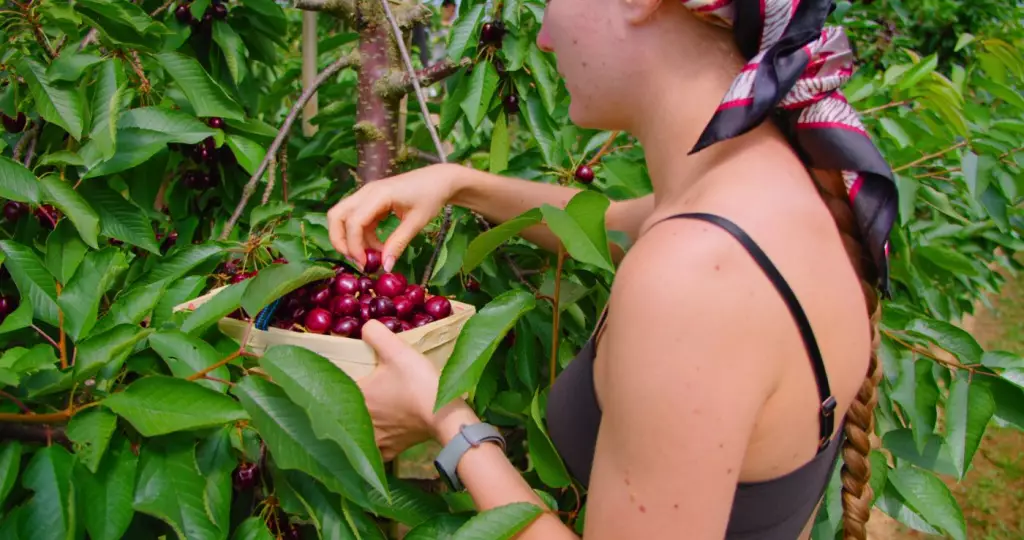
In addition to the fruits themselves, cherry trees are also valued for their ornamental properties. The Black Cherry tree, for instance, showcases showy white flowers in early spring, followed by dark, pea-sized fruits in late summer. The mature bark is dark and scaly, adding to the tree's overall beauty.
Hard maple: a solid investment
Profit potential: $3,000 to $5,000 per acre
- a dense, strong wood used for flooring, furniture, and cutting boards
Hard Maple, scientifically known as Acer saccharum, is a highly desirable and valuable wood species found in Northeastern North America. By investing in growing hard maple trees, you can expect a reliable return due to their numerous applications.
One of the major advantages of hard maple is its impressive strength and durability. With a Janka hardness of 1,450 lb, this wood is highly resistant to wear and tear, making it perfect for furniture, flooring, and cabinetry. It also has a visually appealing grain which adds value to the wood.
Growing hard maple trees in your backyard or on your land can be rewarding due to their environmental benefits. These trees provide shade, help reduce soil erosion, and improve air quality by absorbing carbon dioxide. Plus, as a renewable resource, you're contributing to sustainable forestry practices.
To ensure your hard maple trees thrive, you should pay attention to soil conditions, sunlight requirements, and spacing. Typically, these trees prefer well-drained, slightly acidic soil and at least 4-6 hours of sunlight daily. Be sure to also leave enough space between each tree for optimal growth.
In addition to lumber, hard maple trees can also be tapped for their sap, which is used to produce the delicious maple syrup. This provides you with an additional income stream and adds versatility to your investment.
The earning potential of red oak
Profit potential: $4,000 to $6,000 per acre
- a popular hardwood with a wide range of uses, including furniture, flooring, and cabinetry
Growing Red Oak trees can be a profitable venture. These trees are known for their beautiful appearance and versatile wood, which is highly sought-after for various purposes. To make the most out of your investment, you should familiarize yourself with the requirements for growing and maintaining a healthy Red Oak.
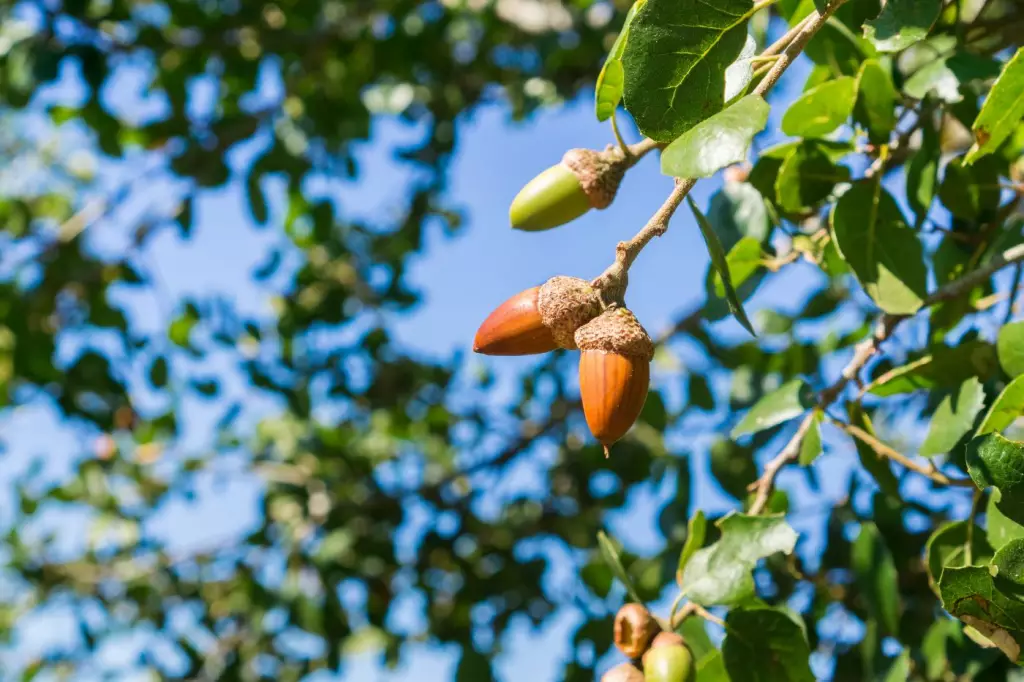
One of the factors to consider when growing Red Oak trees is the pH level of the soil. Red Oaks prefer acidic to neutral pH levels of 6.0-7.2. Moist to medium-moist soils with good drainage are also necessary for the optimal growth of these trees. Meeting these requirements ensures that your trees will grow strong and healthy, ultimately increasing their value.
As your Red Oak trees mature, they can reach a height of 60 to 75 feet. The size of the trees directly impacts their profitability, as larger trees typically yield more lumber. Remember that patience is key when growing hardwood trees, as it may take several years for them to reach their full potential.
In addition to their lumber, Red Oak trees can provide additional revenue streams. For example, their seeds can be sold as seedlings for other growers, making them a valuable asset in the tree-growing industry.
There are several other profitable hardwood trees you can consider growing alongside Red Oak.
Prospering with poplar
Profit potential: $2,000 to $3,000 per acre
- a fast-growing tree with a light-colored wood used for furniture, pallets, and plywood
Yellow Poplar, also known as Tulip Poplar, is an attractive and fast-growing hardwood tree. Planting these trees on your property can bring numerous benefits, both economically and environmentally. These trees can reach a height of 50 to 80 feet, making them valuable for lumber production. Here, you'll learn more about growing and profiting from Yellow Poplar trees.
To start, choose the right site for your Yellow Poplar plantation. These trees thrive in areas with well-drained, fertile soils and sufficient sunlight. They are also adaptable to a wide range of climatic conditions, making them suitable for planting in many regions.
For optimal growth, plant the saplings at a spacing of at least 6 to 12 feet apart, allowing their roots to spread and establish. As the trees grow, they will compete for available resources such as light, space, and nutrients. Proper spacing ensures each tree receives an adequate amount of these resources.
The economic benefits of Yellow Poplar trees are mainly derived from their high-quality wood, which is used for various purposes like furniture, plywood, veneer, and cabinetry. To maximize your profits, consider utilizing sustainable forestry practices. This includes regular maintenance like pruning, thinning, and pest control, ensuring healthy and valuable trees for future harvests.

Additionally, Yellow Poplar trees provide environmental benefits like improving air quality, offering shade for humans and wildlife, and reducing soil erosion. These positive impacts could contribute to a more sustainable and eco-friendly lifestyle.
Most Profitable Hardwood Trees to Grow
This list includes the top 5 profitable trees for lumber mentioned earlier.
Highly valued hickory
Profit potential: $4,000 to $6,000 per acre
- a strong, durable hardwood used for tool handles, furniture, and flooring
Hickory trees can take 40 to 50 years to reach maturity, but can be worth a significant amount of money once they are ready to be harvested. Hickory is highly resistant to rot and decay, which makes it a popular choice for outdoor applications like tool handles and smoking meats.
To make more profit from growing hickory, consider the following:
- Grow hickory in areas with high demand for hardwoods, such as the furniture or flooring industry.
- Consider value-added products such as furniture, flooring, or specialty wood products to increase the value of the wood.
- Consider using agroforestry techniques to grow crops or livestock in conjunction with the trees to increase overall productivity and provide additional sources of income.
Strong and durable white oak
Profit potential: $10,000 to $15,000 per acre
- a strong, durable hardwood used for furniture, flooring, and barrels
White oak trees can take 50 to 100 years to reach maturity, but can be worth a significant amount of money once they are ready to be harvested. White oak is highly durable and resistant to decay, which makes it a popular choice for barrels used in the wine and whiskey industries.
To make more profit from growing white oak, consider using timber stand improvement techniques to selectively thin the trees and promote better growth, which can improve the quality of the wood produced and increase the overall yield.
Strong and flexible ash
Profit potential: $4,000 to $6,000 per acre
- a strong, flexible hardwood used for furniture, flooring, and sports equipment
Ash trees can take 20 to 40 years to reach maturity, but can be worth a significant amount of money once they are ready to be harvested. Ash wood is highly flexible and shock-resistant, which makes it a popular choice for sports equipment like baseball bats and hockey sticks.
Ash trees are highly adaptable to a wide range of soil types and growing conditions, which makes them a good choice for marginal lands. They are important for supporting the life cycle of the emerald ash borer beetle, which is a valuable food source for woodpeckers and other wildlife.
Light-colored birch
Profit potential: $2,000 to $3,000 per acre
- a light-colored hardwood used for furniture, cabinets, and decorative veneers
Birch trees can take 30 to 50 years to reach maturity, but can be worth a significant amount of money once they are ready to be harvested. To make more profit from growing birch, consider growing birch in areas with high demand for hardwoods, such as the furniture or cabinet industry.
Birch trees are highly valued for their decorative bark, which is used in a variety of crafts and decorative applications. They are important for supporting the life cycle of a variety of wildlife, including moose and snowshoe hares.
Birch sap can be harvested in the spring and used to make birch syrup, which is becoming increasingly popular as a gourmet food product.
Soft, light-colored butternut
Profit potential: $2,000 to $3,000 per acre
- a soft, light-colored hardwood used for furniture and carvings
Butternut trees can take 30 to 50 years to reach maturity, but can be worth a significant amount of money once they are ready to be harvested. They are important for supporting the life cycle of a variety of wildlife, including squirrels and woodpeckers.
To make more profit from this tree, consider growing butternut in areas with high demand for specialty woods, such as the woodworking or carving industry. Butternut wood has a distinctive grain pattern that makes it highly sought after for furniture and carvings.
The sweet returns of sugar maple
Profit potential: $3,000 to $5,000 per acre
- a slow-growing species with a high demand for its dense, hard wood, especially for flooring and furniture.
Growing sugar maple trees can be an attractive and profitable choice, especially when you consider their multi-faceted benefits to your bank account and the environment. These trees are adaptable, easy to grow in your backyard, and they offer a substantial return on investment.
One of the key reasons for considering sugar maple trees is their value in producing maple syrup. Known for being the primary source of maple syrup, a sugary delight found in various dishes and used as a natural sweetener, tapping these trees for their sap can quickly turn into a valuable revenue stream for you. With the right care, a single tree can produce sap for decades.
In addition to maple syrup, sugar maple trees contribute towards the timber industry. The dense hard wood from the trees can be uniquely utilized to craft fine furniture, offering both durability and aesthetics. Your investment in these trees can potentially pay off if you have the foresight to sell their lumber.
Sugar maples are not only profitable but also visually appealing. Their foliage transforms into a vibrant display of yellow, orange, and red colors in the fall, making them a stunning addition to your property. These trees can enhance the ambiance of your surroundings and potentially raise your property value.
As you venture into growing sugar maple trees, remember that patience is essential. They take 20 to 30 years to reach full maturity, but the sweet returns they offer in maple syrup, beautiful foliage, and quality timber make them a worthy long-term investment.
As a friendly reminder, take note of any local guidelines or permits for growing and nurturing sugar maples, and enjoy the fruitful rewards that await you.
The distinctive sycamore
Profit potential: $2,000 to $3,000 per acre
- a light-colored hardwood used for furniture, flooring, and decorative veneers.
Sycamore trees can take 50 to 100 years to reach maturity, but can be worth a significant amount of money once they are ready to be harvested. They have a high tolerance for pollution and can help improve air quality in urban areas.
Sycamore wood has a distinctive grain pattern that makes it highly sought after for furniture and decorative veneers. Sycamore trees are important for supporting the life cycle of a variety of wildlife, including birds and mammals.
Most Profitable Nut Trees
Almonds: a wealth of opportunity
Profit potential: $12,000 to $20,000 per acre
- high demand and prices make almonds one of the most profitable orchard crops
If you're looking to make a profitable investment in your backyard or add some value to your farming endeavors, almonds can be an excellent choice. These popular nuts are known for their high yield, and have multiple uses, either eaten raw or included in baked goods and candy.
Cultivating almond trees can be quite simple, making them an attractive option for first-time growers. Almond trees can begin producing their edible nuts within just two years of planting. Additionally, as the trees mature, their nut production can increase, providing you with a consistent and potentially lucrative source of income.
Not only do almonds offer financial benefits, but they also contribute positively to the environment. Their beautiful blossoms make for an aesthetically pleasing addition to any landscape. Moreover, almond trees attract pollinators like bees, which can help improve your overall garden ecosystem.
The rich returns of chestnuts
Profit potential: $1,000 to $2,000 per acre
- a durable hardwood used for furniture, flooring, and decorative veneers. Chestnuts are a niche crop with growing demand, especially for the gourmet market.
Chestnuts are not only delicious but also a highly profitable nut crop. If you're considering diversifying your farm or starting a new orchard, chestnuts might be the perfect option for you. They are in high demand, yet much of the chestnuts consumed in the US are currently imported from Italy, China, and Korea. So, there's potential for local growers to make a significant impact.
Growing chestnuts is not only environmentally friendly, but they can also be an excellent crop for land designated as highly erodible. It typically takes six to eight years for a chestnut tree to start bearing commercial quantities of nuts. However, once they start producing, the returns can be substantial. High-quality seed nuts can command prices of up to $0.50 per nut. With chestnuts coming in at around 30-50 nuts per pound, seed nut producers can make $15-$25 per pound.
Marketing chestnuts as a cash crop is just one way to make a profit. The trees themselves can be incorporated into agroforestry systems for added benefits, such as carbon sequestration, habitat creation, and reduced soil erosion. Moreover, a well-established chestnut orchard can produce up to 6,000 pounds of nuts per acre.
Pecans for food and snacks
Profit potential: $12,000 to $20,000 per acre
- are a high-value nut crop that are used for food and snacks
Pecan trees can take 5 to 10 years to start producing nuts, and can continue to produce for over 100 years. To make more profit from growing pecans, consider the following:
- Grow pecans in areas with high demand for nuts.
- Consider value-added products such as specialty foods or snacks to increase the value of the nuts.
- Consider participating in carbon credit programs that pay landowners to sequester carbon in trees, which can provide an additional source of income.
Aside from almonds, chestnuts, and pecans, other nut trees you can grow for profit include hazelnuts, pistachios, and walnuts.
Most Lucrative Orchard Crops or Fruit Trees
Reaping profits from apples
Profit potential: $8,000 to $12,000 per acre
- a popular fruit with a wide market, especially for fresh consumption and juice production
Growing apples in your orchard can be a fruitful venture, especially if you choose the right variety and invest time and effort in proper maintenance. As a tasty and popular fruit, apples have the potential to bring in a considerable return on investment. Various varieties offer unique flavors, colors, and growth patterns, so you'll want to consider these factors when deciding on which apples to plant.
To get started, select apple tree varieties that are well-suited to your local climate and soil conditions. It's also important to manage pests, disease, and proper pruning to ensure a healthy and prolific orchard. As with any agricultural endeavor, mastering the art of apple tree care takes time and practice. However, once you get the hang of it, your orchard could earn you a tidy profit each year.
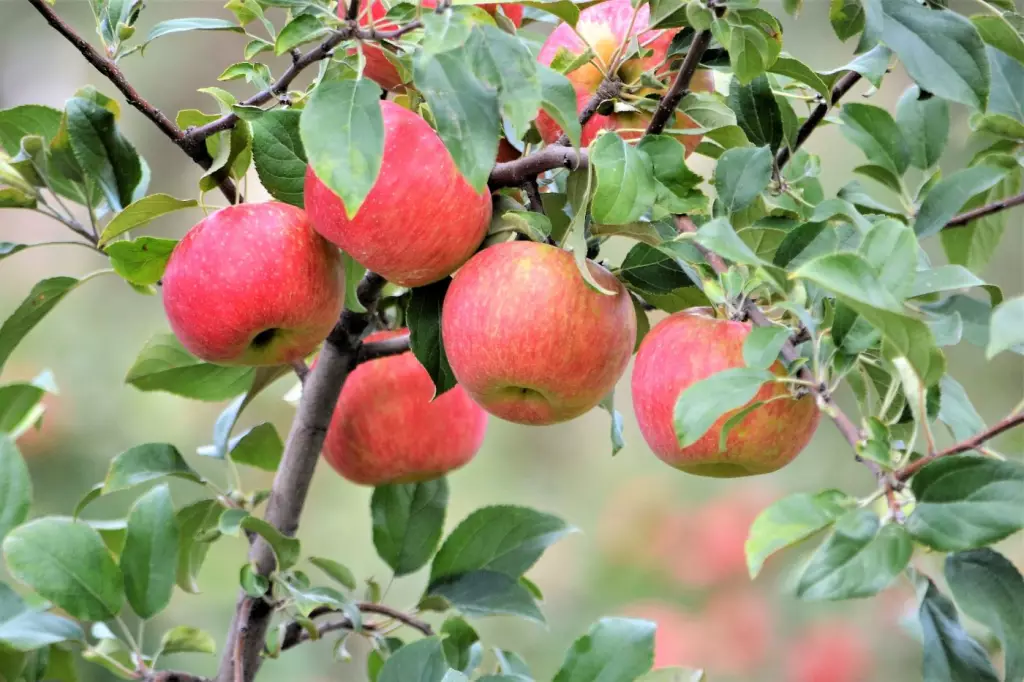
Besides selling the fresh fruit, apples can be processed into an array of products such as apple juice, apple sauce, apple cider, and apple butter. Engaging in these value-added processes can help you generate additional income, further augmenting the overall profitability of your apple orchard.
As you dedicate time and effort to growing apples, keep in mind that periodic assessment of your orchard's performance is crucial. Be prepared to adjust your management strategies as needed to continually optimize production and profit.
Avocados: the green gold
Profit potential: $10,000 to $15,000 per acre
- high prices and increasing demand make avocados a profitable crop, especially in warm climates
Growing avocados can be a profitable venture, especially when you consider their rising popularity. As you cultivate avocados, you'll be able to reap the benefits of their high demand and nutritional values. Here are a few factors to keep in mind when cultivating these green gold fruits.
Choose the right variety: Make sure to choose avocado varieties that are suitable for your climate, and note that some are more profitable than others. For example, the Kahalu'u variety is highly regarded for its flavor in Hawaii, making it a great choice if you're growing them in a tropical environment.
Care and maintenance: Avocado trees require proper care for successful cultivation. Regular pruning is essential to encourage bushy growth, which can lead to a higher yield. Start pruning when trees are young and continue on a yearly basis to maintain their growth. Keep an eye for pests such as Mirids and scale insects, as these can affect the health of your tree.
Harvesting: Pick the right time to harvest your avocados for optimal returns. The harvesting time can vary depending on the variety, so track the progress of your fruits to ensure they reach their prime. This can also lead to higher-quality fruits and better returns for your investment.
Market your avocados: Consider various ways to market your avocados to increase revenue. Besides selling your produce at local markets and grocery stores, explore the option of selling directly to consumers or restaurants. You can also tap into the growing interest in organic and locally sourced produce as a selling point.
Citrus fruits: squeezing profits
Profit potential: $5,000 to $10,000 per acre
- a wide range of citrus fruits, including oranges, lemons, and grapefruits, have high demand and prices
Growing citrus fruits can be a profitable venture for you, especially if you live in a suitable climate. With high demand and prices, citrus trees offer an excellent opportunity to make money from your backyard or even on a larger scale. Let's take a brief look at some popular citrus fruits and their profitability.
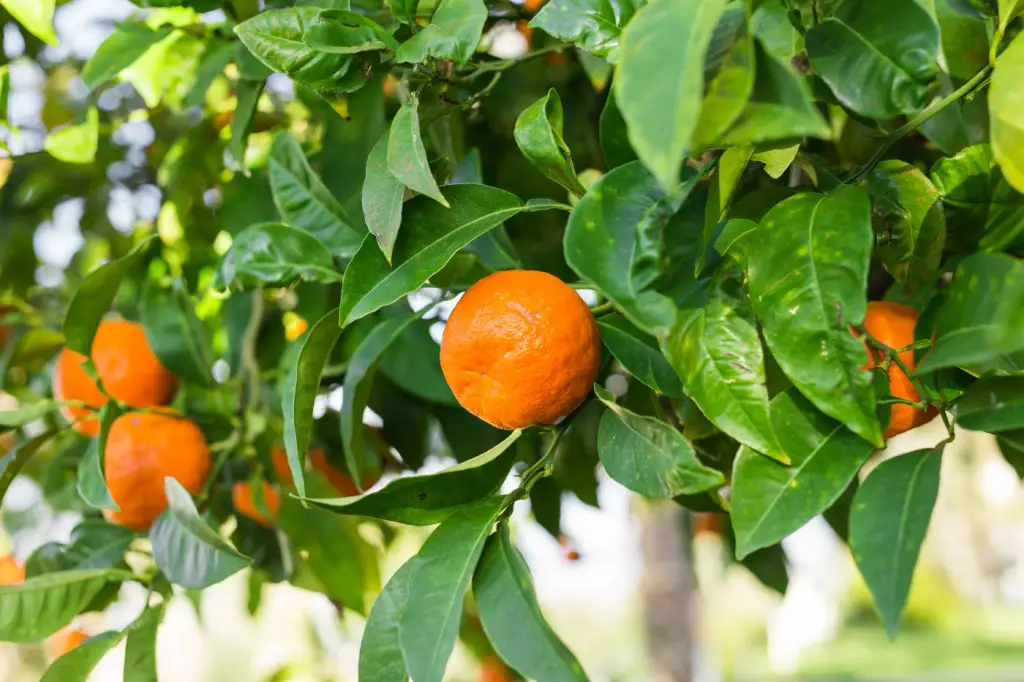
Oranges: This classic fruit is known for its sweet, juicy taste and high vitamin C content. Many people love fresh oranges or their juice, making orange trees a popular choice for growing. Based on reliable market prices, you can expect to make profits with oranges, but remember that the right environment is crucial for the tree's success.
Lemons: Lemons are versatile fruits, widely used in various culinary recipes, lemonade, and as refreshing garnish for meals and drinks. They also carry numerous health benefits, like high vitamin C and antioxidants. Growing lemon trees can yield a considerable income, especially if you select the ideal location and take proper care of them.
Limes: These tangy and zesty fruits are sought after for their distinct flavor and culinary uses in beverages, desserts, and savory dishes. Lime trees are relatively low-maintenance, providing you with a good profit when grown in favorable conditions.
Grapefruit: Often eaten as a healthy breakfast choice, grapefruits are not only rich in vitamins, but they also boast a unique taste. If you decide to grow grapefruit trees, make sure they receive adequate care and are located in a suitable area to maximize your profits.
Feasting on figs' profit
Profit potential: $2,000 to $4,000 per acre
- a low-maintenance crop with growing demand, especially for the fresh and dried fruit market
Figs are a popular and profitable fruit to grow in your backyard. With a friendly atmosphere and plenty of natural benefits, choosing to invest in fig trees can be a smart decision for both your taste buds and your wallet.
Figs are derived from the common fig tree (Ficus carica), which is a popular choice for home gardeners due to its flowers not requiring pollination to yield figs. There are numerous varieties of the common fig tree, with some hardy cultivars able to grow outdoors in slightly cooler climates (Zones 6 and 7). This flexibility means you can potentially grow profitable fig trees in a wider range of locations.
In addition to their delectable taste, figs provide numerous health benefits, which can make them a desirable addition to consumers' diets. They are packed with fiber, vitamins, and minerals, all while being low in calories. Moreover, figs can be enjoyed fresh, dried, or in various culinary dishes, which can cater to a diverse range of customers and preferences. This versatility adds to their profit potential.
To maximize the profit of growing figs, consider planting multiple trees and selling them as a small-scale business. You could sell your figs at local farmers' markets or team up with other local growers to form a cooperative in selling your produce. By providing a healthy and delicious option, you will have the potential to build a loyal client base.
Grapes: a vine investment
Profit potential: $6,000 to $8,000 per acre
- a versatile crop with high demand for fresh consumption, wine production, and raisin production
Grapes can be a profitable and enjoyable addition to your agricultural endeavors. They come in many varieties, making them suitable for different purposes, such as wine production, table grapes, or even ornamental use. But before you dive into the world of grape growing, it's important to have a clear plan and consider some factors that could impact your success.
First, consider the type of grape you want to grow. Different varieties will have varying growth habits, taste, and overall maintenance requirements. It's crucial to choose a variety that fits well with your local climate, geographic region, and intended use. For instance, some grape types are more suited for wine production, while others might be best for fresh consumption.
Planting and spacing play a significant role in the success of your grape-growing venture. Grapes typically require a trellis or support structure to grow optimally. Plant grapevines 6 to 10 feet apart to ensure proper airflow and reduce the risk of disease or pests. When it comes to pruning, it's essential to maintain a balance between growth and fruit production, as too much foliage may hinder sunlight penetration and proper fruit ripening.
Another crucial aspect of grape growing is pest and disease management. Grapes are susceptible to various pests and diseases, so you need to stay vigilant and maintain a proactive approach to minimize damage. Implement strategies like removing fallen leaves, monitoring for insects, and using environmentally friendly solutions to handle common grape problems.
Fastest Growing Timber Trees
The list includes species such as hybrid poplar, eucalyptus, black locust, and silver maple, which can grow up to 10 feet or more per year under ideal conditions. These fast-growing trees are important for sustainable forestry. The potential benefits and challenges of growing fast-growing trees include the need for proper management and the potential for high yields of low-quality wood.
Loblolly pine
Loblolly pine is widely grown in the southern United States for timber and pulpwood production. The estimated value of loblolly pine per acre can range from $1,500 to $2,500 depending on the age and quality of the trees. The factors that can affect the value of loblolly pine include market demand, timber prices, and management practices. Proper forest management is important for maximizing the value of loblolly pine and maintaining the long-term health and productivity of the forest.
Merry Profits in Christmas Tree Farming
Starting a Christmas tree farm can be a profitable business with the average profit per tree ranging from $30 to $50. The profit per acre can vary depending on factors such as tree density, tree species, and market demand, but can range from $3,000 to $15,000 per acre. However, starting a Christmas tree farm also requires a significant investment in startup costs, which can range from $3,000 to $5,000 per acre.
The recommended acreage for a Christmas tree farm can also vary depending on factors such as market demand, tree species, and management practices, but a minimum of 3 acres is recommended for a profitable operation. The average size of a Christmas tree farm in the United States is around 20 acres, but can vary greatly depending on location and market demand. The number of Christmas trees that can be grown per acre can vary depending on factors such as tree species, tree spacing, and tree age, but can range from 1,500 to 2,500 trees per acre.
Grants and funding opportunities are available for starting a Christmas tree farm, with some of the most lucrative grants including the Conservation Reserve Program and the Environmental Quality Incentives Program. However, starting a Christmas tree farm also requires compliance with state and federal regulations, such as land acquisition, tree planting and management, marketing and sales.